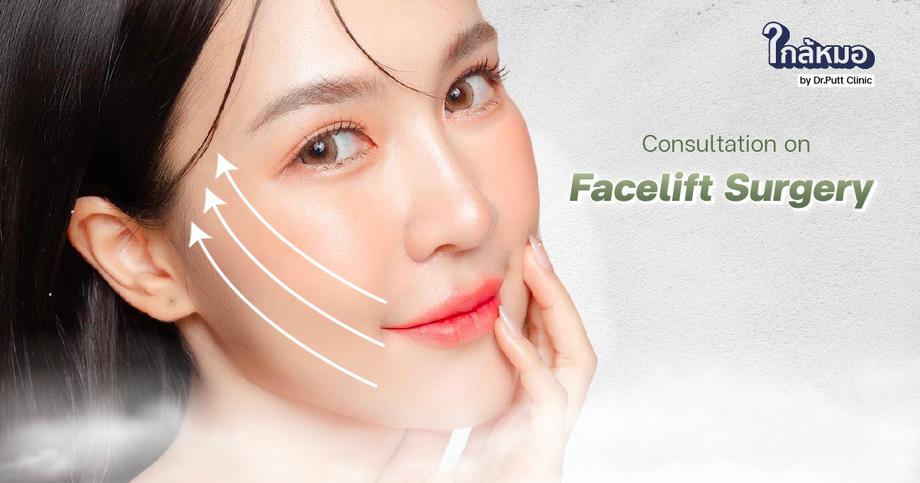Surgery Consultation
Facelift Consultation
Facelift surgery is a procedure that addresses sagging skin on the face, restoring a smoother, more youthful appearance.
Facelift surgery is a procedure that addresses sagging skin on the face, restoring a smoother, more youthful appearance. A surgeon will tighten the underlying muscles to perfectly fit each individual's facial structure, ensuring the treatment is neither too minimal nor too aggressive. The procedure is typically divided into three main areas.
Facelift Surgery
As we age, our faces naturally begin to show signs of sagging. Facelift surgery is designed to counteract this process by tightening the muscles and fat beneath the skin back to their proper positions and removing excess skin to create a firmer, smoother facial contour. Modern surgical techniques for facelifts have advanced significantly, providing faster recovery times and longer-lasting results.
Facelifts can be performed on four main areas
Forehead Lift: This focuses on correcting wrinkles on the forehead and between the eyebrows, and lifting droopy eyebrows for a more defined, attractive arch.
Upper Facelift (Temporal Lift): This addresses issues around the temples and sagging outer corners of the eyebrows, which can make a face look sad. It lifts the outer brows for a brighter, more vibrant expression.
Mid and Lower Facelift: This targets sagging skin and muscles in the lower half of the face, including the lower cheeks, jawline, corners of the mouth, and the area under the chin. It effectively resolves problems like skin laxity, deep nasolabial folds, and an undefined jawline.
Neck Lift This focuses on tightening the skin and muscles of the neck, correcting a double chin, neck bands, or loose neck skin, which often result from aging or fat accumulation.
Glai Mhor's Facelift Technique
The "sectional facelift" technique, which divides the procedure into areas like the Upper Face, Mid-Face, Lower Face, and Neck Lift, has become increasingly popular in modern plastic and aesthetic surgery. This approach offers more precise and effective results for specific problem areas than a full facelift.
1. Precise Problem-Solving
A sectional facelift allows the surgeon to concentrate on the specific issues of each area, such as
Crow's feet: Corrected with an upper facelift.
Deep nasolabial folds: Corrected with a mid-facelift.
Sagging lower cheeks: Corrected with a lower facelift or a neck lift.
2. Avoids Unnecessary Full-Face Surgery
This technique is ideal for individuals between 30 and 50 years old who only have early signs of sagging in certain areas, such as the eyebrows or outer corners of the eyes. This reduces the size of the incisions, shortens recovery time, and is more cost-effective.
3. Refined and Natural Results
Because each area has different skin thickness, laxity, and muscle structure, a sectional facelift allows the surgeon to precisely adjust the tension in each part of the face. This ensures a balanced look that doesn't appear overly tight or unnatural.
Who is suitable for a facelift?
Facelifts are typically recommended for individuals aged 40 and older, as this is when skin laxity becomes more noticeable, particularly around the jawline, lower cheeks, nasolabial folds, and neck. A facelift is the ideal solution for those who want a long-lasting, deep-level correction of both skin and muscle laxity—results that cannot be achieved with injections or thread lifts. If you feel your face no longer looks vibrant despite good skincare, or if other methods haven't worked, a consultation with a surgeon is the best next step.



